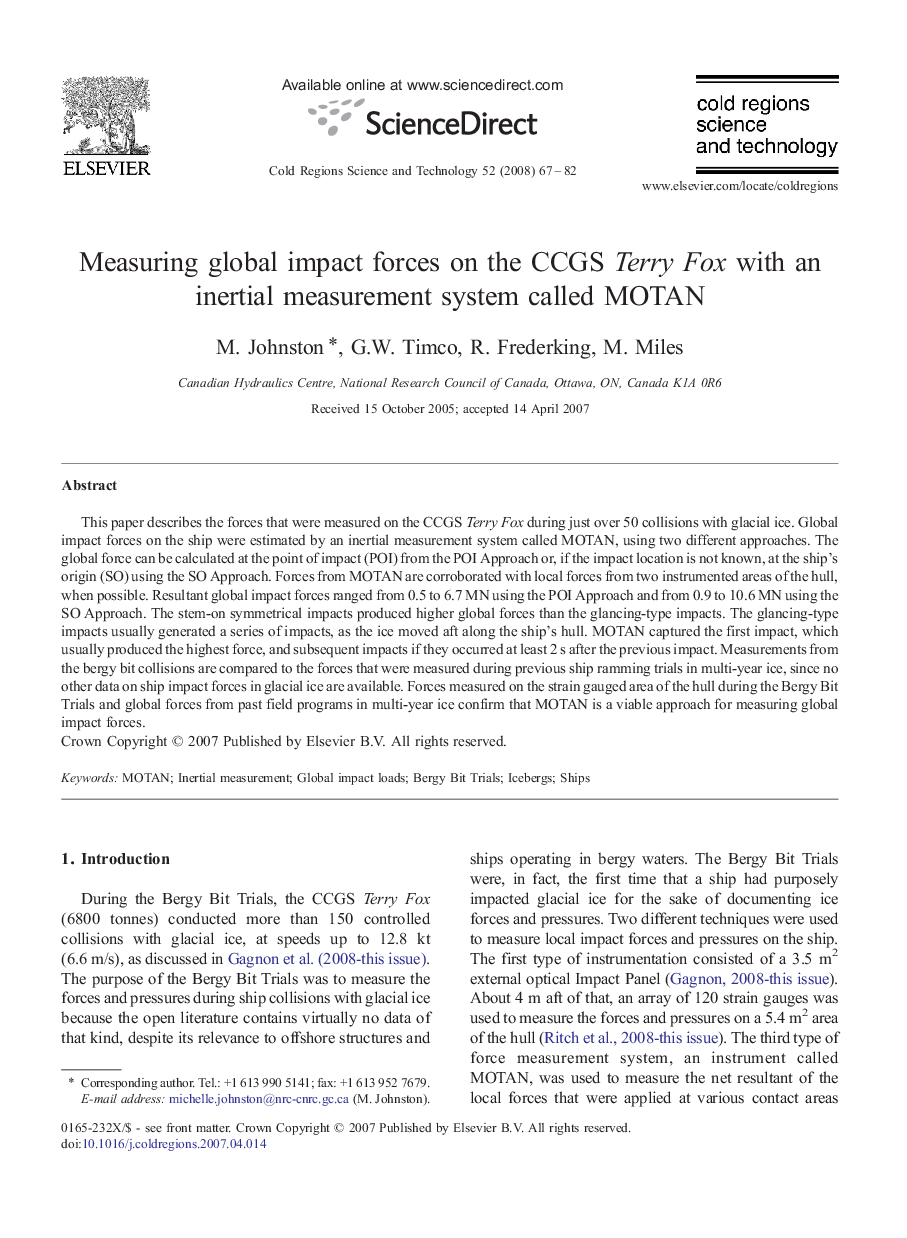| Article ID | Journal | Published Year | Pages | File Type |
|---|---|---|---|---|
| 4676811 | Cold Regions Science and Technology | 2008 | 16 Pages |
Abstract
This paper describes the forces that were measured on the CCGS Terry Fox during just over 50 collisions with glacial ice. Global impact forces on the ship were estimated by an inertial measurement system called MOTAN, using two different approaches. The global force can be calculated at the point of impact (POI) from the POI Approach or, if the impact location is not known, at the ship's origin (SO) using the SO Approach. Forces from MOTAN are corroborated with local forces from two instrumented areas of the hull, when possible. Resultant global impact forces ranged from 0.5 to 6.7Â MN using the POI Approach and from 0.9 to 10.6Â MN using the SO Approach. The stem-on symmetrical impacts produced higher global forces than the glancing-type impacts. The glancing-type impacts usually generated a series of impacts, as the ice moved aft along the ship's hull. MOTAN captured the first impact, which usually produced the highest force, and subsequent impacts if they occurred at least 2Â s after the previous impact. Measurements from the bergy bit collisions are compared to the forces that were measured during previous ship ramming trials in multi-year ice, since no other data on ship impact forces in glacial ice are available. Forces measured on the strain gauged area of the hull during the Bergy Bit Trials and global forces from past field programs in multi-year ice confirm that MOTAN is a viable approach for measuring global impact forces.
Keywords
Related Topics
Physical Sciences and Engineering
Earth and Planetary Sciences
Earth and Planetary Sciences (General)
Authors
M. Johnston, G.W. Timco, R. Frederking, M. Miles,
